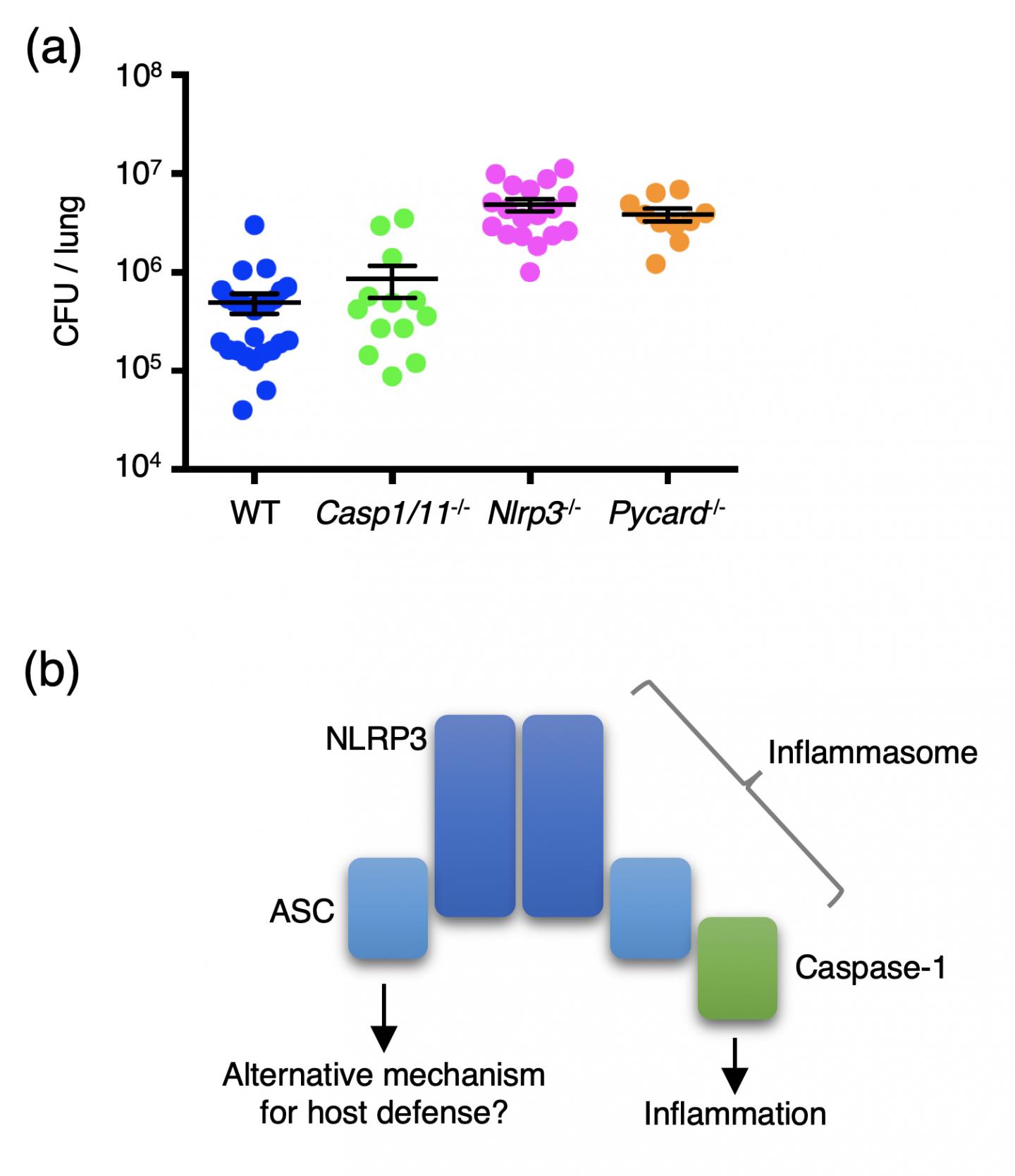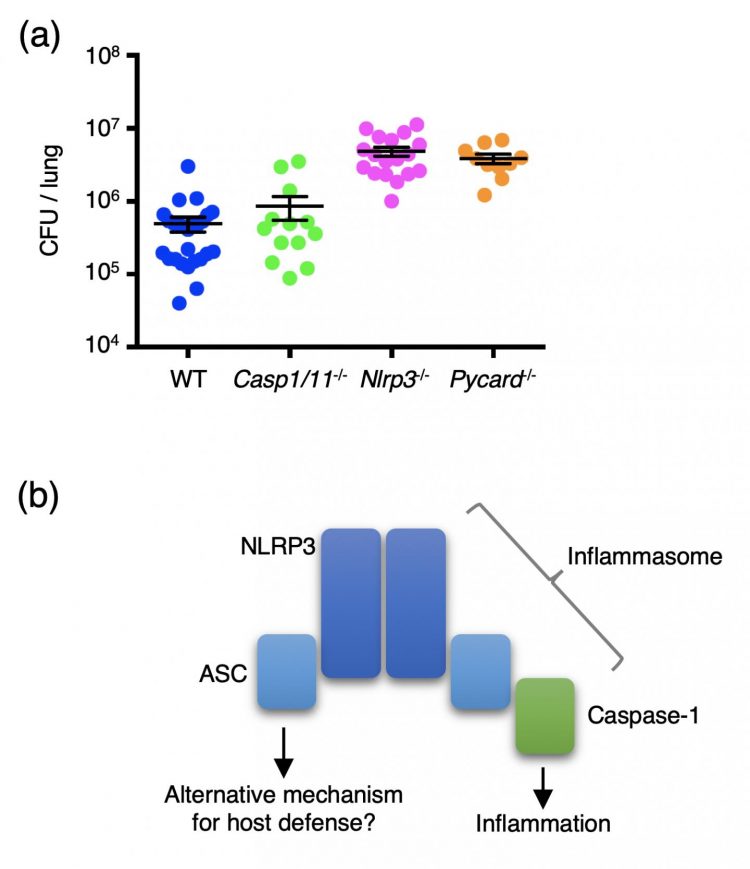A research team including Kanazawa University discover an alternative mechanism which may help control microbial infections in the airway

Credit: Kanazawa University
Kanazawa, Japan – Contrary to popular belief, there may be more than one mechanism involved in microbial airway protection. Researchers from Japan and China have found an alternative mechanism that may be involved in fighting microbial infections.
The inflammation pathway in response to microbial infections involves multiprotein complexes known as inflammasomes. It is known that inflammasomes induce inflammation by activating caspase-1, an enzyme that cleaves other proteins. In turn, caspase-1 converts the precursors of interleukin-1β and interleukin-18 known as pro-inflammatory cytokines to their active forms. In addition, caspase-1 processes gasdermin D, leading to pyroptosis, a necrotic form of inflammatory cell death.
In a study published in July of this year in Mucosal Immunology, the researchers found that caspase-1 is unnecessary in maintaining innate immune homeostasis in the airway. Instead, two protein components of the inflammasome, ASC and NLRP3, have found to be key players in this process.
“Based on previous reports, we understood that the protein NLRP3, plays a protective role against Streptococus pneumonia,” says study author Kohsuke Tsuchiya. “Hence, we decided to further investigate the role of NLRP3 in microbial protection. Using mice models, we found that NLRP3, along with ASC, may play a protective role against S. pneumoniae.”
The research team also found that ASC and NLRP3 protect the mice from S. pneumonia through a mechanism that is independent of caspase-1. Therefore, the researchers set out to elucidate this caspase-1-independent mechanism.
The results revealed that ASC and NLRP3 positively controlled the expression of the protein SPDEF during infection with S. pneumonia. SPDEF is a transcription factor involved with the expression of the mucosal defense factor genes. The study also showed that ASC and NLRP3 was key in activating STAT6, a regulator of the Spdef gene.
“Our results suggest that ASC and NLRP3 protect against microbial infections possibly through the STAT6-SPDEF pathway, which is independent of the caspase-1-dependent mechanism. This also means that both ASC and NLRP3 are acting independent of the inflammasome mechanism,” says author Rendong Fang.
The group’s findings may allow for new understanding of different possible mechanisms involved in maintaining innate immunity in the airway. However, further experiments are required, such as investigation into the mechanism linking S. pneumonia infection to STAT6 activation and whether both ASC and NLRP3 will maintain the expression of mucosal defense genes when infected by other microbial agents.
###
Media Contact
Tomoya Sato
[email protected]
Related Journal Article
http://dx.





